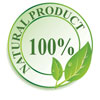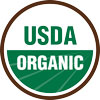People are getting wise to what they are eating. Hopefully you are checking labels for unwanted and bad ingredients. What about your pets? Over the last few years we have seen a big upswing in the demand for better pet food, and now people are looking for “natural” and organic ingredients in Fido and Fluffy’s food. Pet food manufacturers are meeting that demand, and new products are being introduced regularly but how many of them are truly organic versus “natural”. I will attempt to explain the difference between natural and organic pet food as well and what that means for their health and your pocketbook.
 Natural: Natural:
In the Human food industry today, there’s NO official FDA (Food and Drug Administration) definition of “natural.” It means whatever the food companies want it to mean. It can mean, for example, that all the chemicals found in the product simply aren’t listed on the label. (There’s no requirement for food companies to list chemical contaminants found in their foods.)
A food labeled “all natural” is better than just “natural”, but can still contain pesticides, herbicides, toxic heavy metals, trace amounts of PCBs, toxic fluoride, hidden MSG, high-temperature cooking byproducts, synthetic chemical vitamins, other non-natural substances.
According to the FDA – their loose definition of “natural” foods is ingredients that are processed without preservatives or additives, but may have been grown with the use of pesticides or other conventional methods. The FDA “regulates” the term ‘natural’ only as it applies to added color, synthetic substances, and flavors in the ingredient list. In truth there is no regulation nor any oversight to qualify that food companies are producing something naturally. If the ingredient started as something from nature it qualifies as natural, the FDA doesn’t regulate any of the processing to that ingredient, only how it is listed on the actual food labels.
So what does this mean for your pet? Well “all natural” is a step in the right direction, but doesn’t prevent many of the nasty ingredients we all know can be dangerous for your pets. Dyes, MSG, and harsh preservatives can still be in all natural foods. Often human food companies use the term all natural as an advertising gimmick rather than an indication they are producing a high quality food. Checking the label is more important than relying on the phrase all natural, if there are ingredients that you can barely pronounce or don’t recognize it’s probable that you are being duped and also being charged more for it too!
 Organic: Organic:
Definition of “Organic” refers to ingredients that are grown without synthetic pesticides, insecticides, herbicides, fungicides, hormones, fertilizers or other synthetic or toxic substances. No artificial flavors or colors have been added. Organic food does not include foods that have been irradiated or Genetically Modified Organisms (GMOs).
Organic food IS regulated by the FDA and the USDA (United States Department of Agriculture). It is not only complicated to qualify for USDA organic designation, but there is regular oversight for organic food production. A food that is filling 99% of the organic requirements is still only considered natural. When a company has done everything they need to be organic they will put the USDA organic seal right on the front of the packaging. Because of the oversight and regulation, organic foods are often more expensive. That expense ensures they are as close to the original ingredient composition as possible and have a much larger guarantee of being healthy than something that says it’s “Natural” or “All-Natural”.
There are currently only three brands of pet food that we know of that make an organic pet food. We only carry one of them too! Why? Well organic is a new “thing” in the pet food industry and frankly there are not that many options right now. There is also the cold fact that these types of food demands compete with human foods, and that makes them expensive. Therefore the other reason for carrying only one brand is cost. There are also fewer options in organic pet food because common ingredients that you normally find in pet food are not available as an organic option (ex. salmon or whitefish). When you do see organic pet food it is usually chicken, beef or pork which poses a problem for dogs with protein sensitivities.
We carry Natural Planet Organics pet food produced by KLN a small family owned pet food business. Currently we carry a chicken and rice option, but coming this fall is a grain-free turkey option that will fill a niche nobody else has filled, the rare protein and organic dog food. Will it be more expensive, yes. Will it be worth it, yes! There is already a long list of people looking for this type of food. We always advocate feeding your pets a high quality pet food and we also realize that these are more expensive options. What we have discovered is that most often when you pick a better quality food, they are meeting “natural” requirements without advertising it and your pet needs to eat less food to get the same amount of calories. With organic pet foods the same is true, less food for the same amount of calories with the extra bonus that all the ingredients are as healthful and beneficial as possible.
Does any of this matter for pets? Depends on your morals and how you view your pets. What we have noticed at the Moab BARKery that even the most cash strapped person cares deeply for their pets, and wants the best for them. Do you have to buy organic for them? Only if organic is top priority when it comes to what you eat, otherwise reading the back of the bag and ensuring that the food contains ingredients you can actually pronounce with few preservatives is a great start to buying the best for your cat or dog. I personally haven’t found a raw pet food that is exclusively organic to feed my pets. I use an “all natural” raw food. They use meat that is hormone and antibiotic free. I personally have met the people that make this food, and I know they are using the highest quality ingredients possible. If there were an organic option I would use that instead, but so far they only way to have my cake and eat it too is to make it myself. If you are not finding a pet food that gives you everything you need, consider making your pets food. There are some excellent recipes out there. Otherwise know that if you fall for the “all-natural” without reading the ingredient list you may be overpaying. Organic is the only guarantee that all the ingredients are the best possible, and know that you will have limited option for now.
|